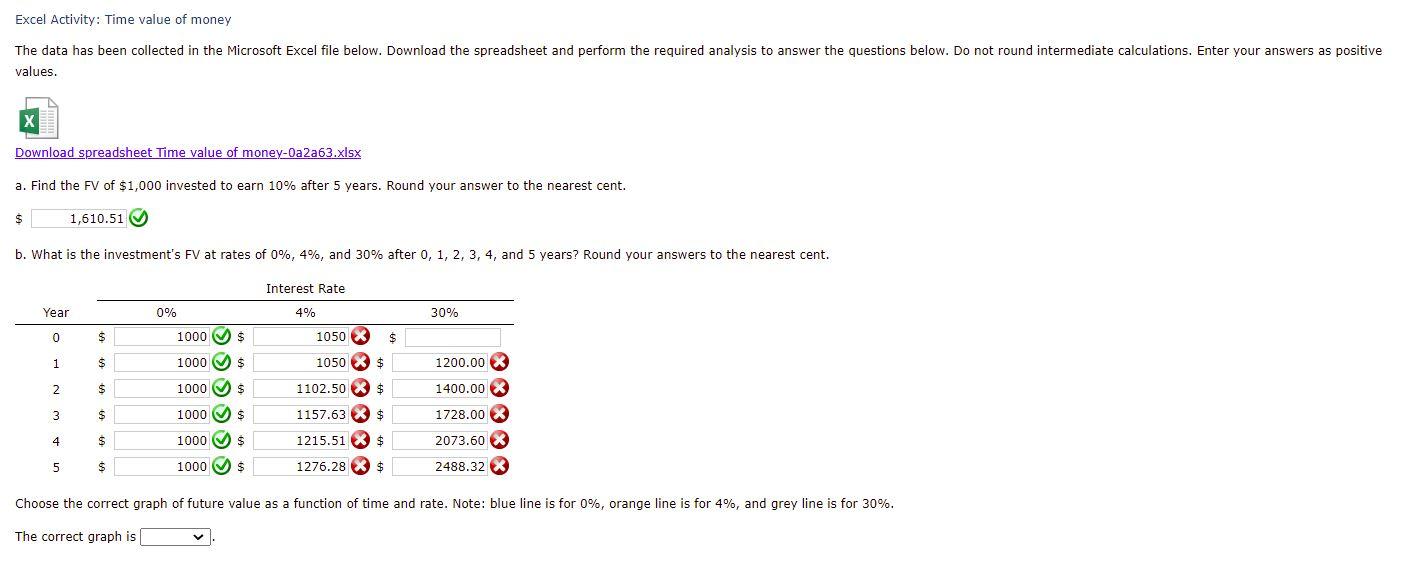

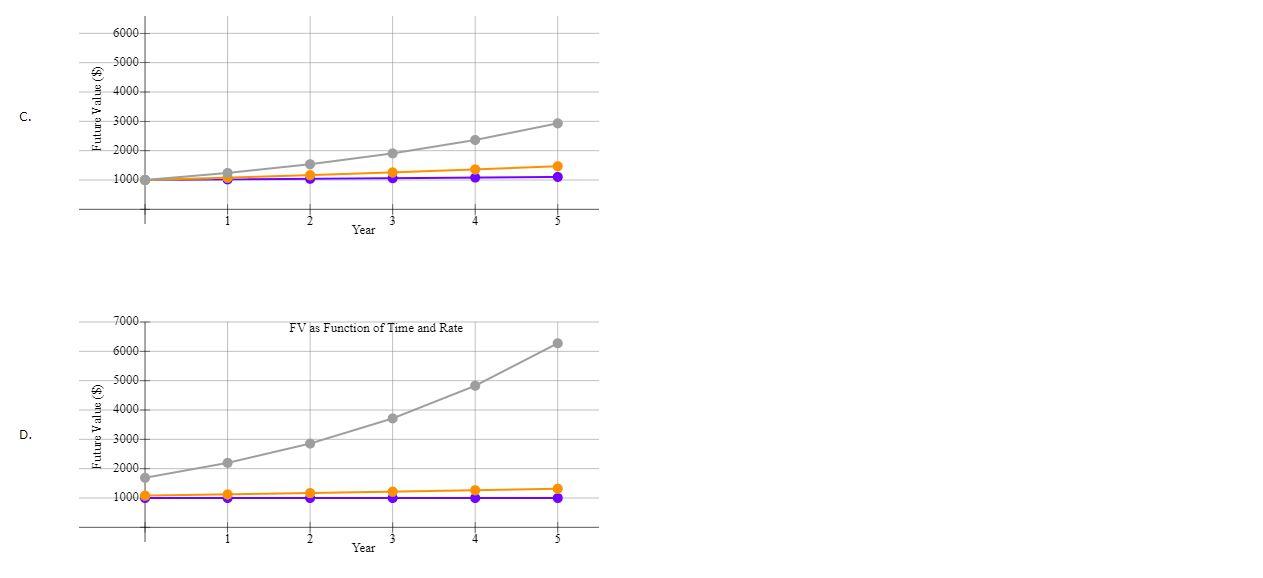
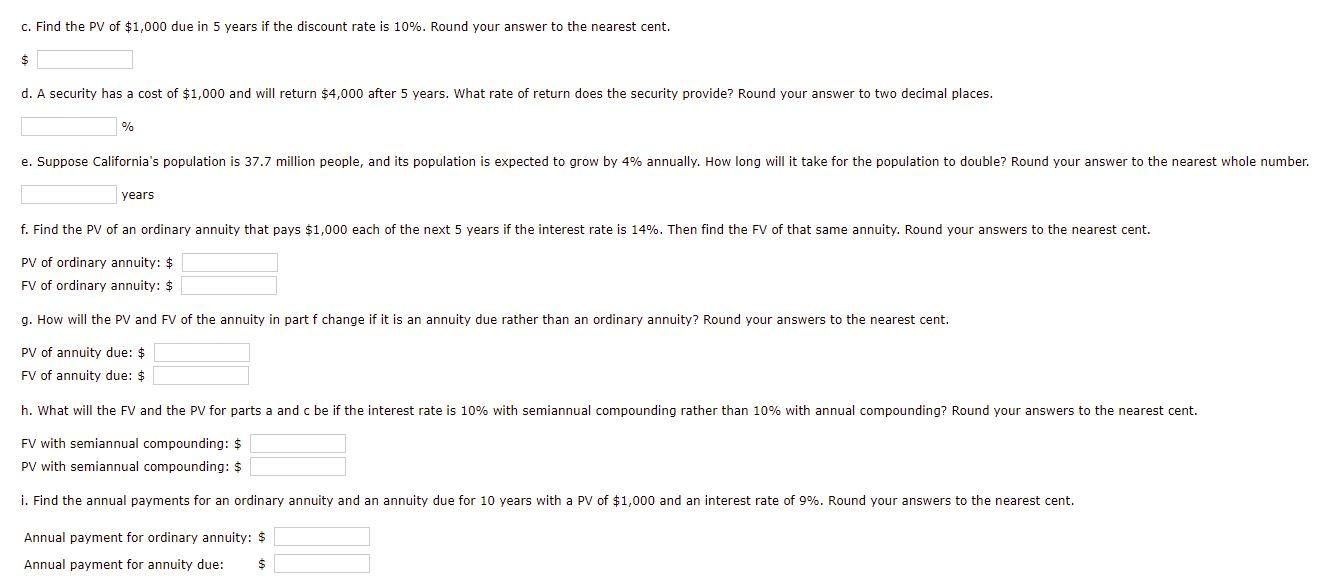
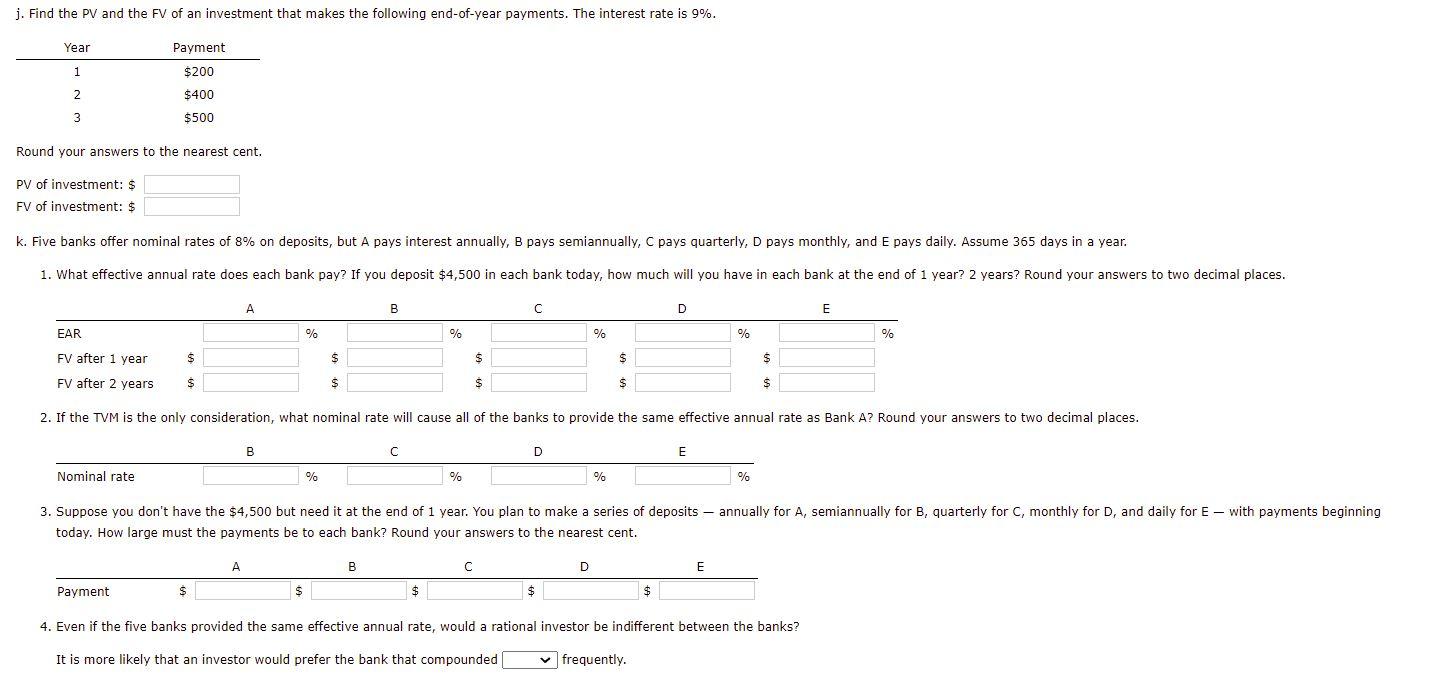
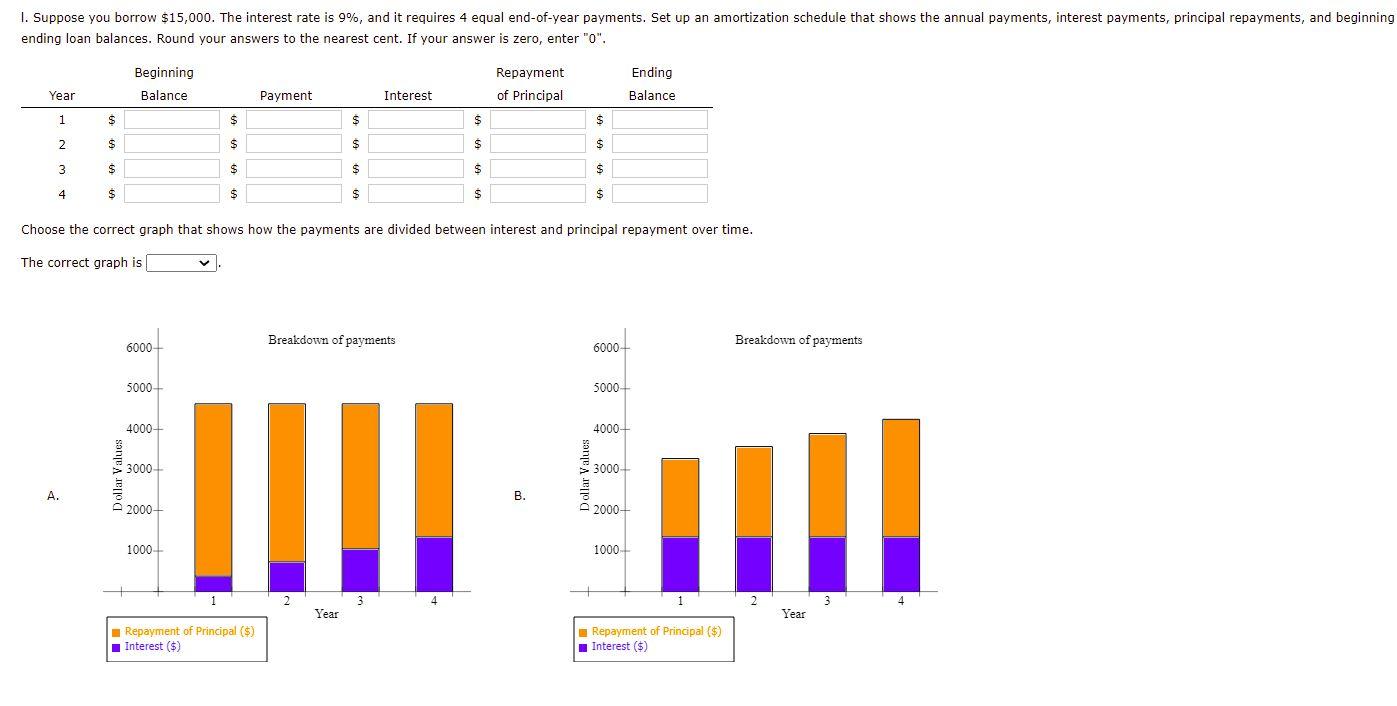
Excel Activity: Time value of money The data has been collected in the Microsoft Excel file below. Download the spreadsheet and perform the required analysis to answer the questions below. Do not round intermediate calculations. Enter your answers as positive values. Download spreadsheet Time value of money-0a2a63.xlsx a. Find the FV of $1,000 invested to earn 10% after 5 years. Round your answer to the nearest cent. $ 1,610.51 b. What is the investment's FV at rates of 0%, 4%, and 30% after 0, 1, 2, 3, 4, and 5 years? Round your answers to the nearest cent. Interest Rate Year 0% 4% 30% 0 $ 1000 $ 1050 $ 1 $ 1000 $ 1050 $ 1200.00 2 $ 1102.50 $ 1400.00 X 3 $ 1157.63 $ 1728.00 X 1000 $ 1000 $ 1000 $ 1000 $ 4 $ 1215.51 $ 2073.60 5 $ 1276.28 $ 2488.32 Choose the correct graph of future value as a function of time and rate. Note: blue line is for 0%, orange line is for 4%, and grey line is for 30%. The correct graph is Choose the correct graph of future value as a function of time and rate. Note: blue line is for 0%, orange line is for 4%, and grey line is for 30%. The correct graph is 7000- FV as Function of Time and Rate 6000 5000 4000 Future Value ($) A. 3000 2000- 10000 Year 7000 FV as Function of Time and Rate 6000 5000 4000 Future Value ($) B. 3000 2000- 1000 Year 6000 5000- 4000 Future Value ($) C. 3000 2000 1000 Year 7000 FV as Function of Time and Rate 6000 5000 4000 Future Value ($ D. 3000 2000 1000 Year c. Find the PV of $1,000 due in 5 years if the discount rate is 10%. Round your answer to the nearest cent. $ d. A security has a cost of $1,000 and will return $4,000 after 5 years. What rate of return does the security provide? Round your answer to two decimal places. % e. Suppose California's population is 37.7 million people, and its population is expected to grow by 4% annually. How long will it take for the population to double? Round your answer to the nearest whole number. years f. Find the PV of an ordinary annuity that pays $1,000 each of the next 5 years if the interest rate is 14%. Then find the FV of that same annuity. Round your answers to the nearest cent. PV of ordinary annuity: $ FV of ordinary annuity: $ 9. How will the PV and FV of the annuity in part f change if it is an annuity due rather than an ordinary annuity? Round your answers to the nearest cent. PV of annuity due: $ FV of annuity due: $ h. What will the FV and the PV for parts a and c be if the interest rate is 10% with semiannual compounding rather than 10% with annual compounding? Round your answers to the nearest cent. FV with semiannual compounding: $ PV with semiannual compounding: $ i. Find the annual payments for an ordinary annuity and an annuity due for 10 years with a PV of $1,000 and an interest rate of 9%. Round your answers to the nearest cent. Annual payment for ordinary annuity: $ Annual payment for annuity due: $ j. Find the PV and the FV of an investment that makes the following end-of-year payments. The interest rate is 9%. Year Payment 1 $200 2 $400 3 $500 Round your answers to the nearest cent. PV of investment: $ FV of investment: $ k. Five banks offer nominal rates of 8% on deposits, but A pays interest annually, B pays semiannually, C pays quarterly, D pays monthly, and E pays daily. Assume 365 days in a year. 1. What effective annual rate does each bank pay? If you deposit $4,500 in each bank today, how much will you have in each bank at the end of 1 year? 2 years? Round your answers to two decimal places. A B D E EAR % % % % % FV after 1 year $ $ S $ S FV after 2 years S S S S S 2. If the TVM is the only consideration, what nominal rate will cause of the banks to provide the same effective annual rate as Bank A? Round your answers to two decimal places. B D E Nominal rate % % % % 3. Suppose you don't have the $4,500 but need it at the end of 1 year. You plan to make a series of deposits annually for A, semiannually for B, quarterly for C, monthly for D, and daily for E with payments beginning today. How large must the payments be to each bank? Round your answers to the nearest cent. A B D Payment $ $ $ $ 4. Even if the five banks provided the same effective annual rate, would a rational investor be indifferent between the banks? It is more likely that an investor would prefer the bank that compounded frequently. 1. Suppose you borrow $15,000. The interest rate is 9%, and it requires 4 equal end-of-year payments. Set up an amortization schedule that shows the annual payments, interest payments, principal repayments, and beginning ending loan balances. Round your answers to the nearest cent. If your answer is zero, enter "O". Beginning Balance Repayment of Principal Ending Balance Year Payment Interest 1 $ $ $ $ $ 2 $ $ S S $ 3 $ $ $ $ $ 4 $ $ S S $ Choose the correct graph that shows how the payments are divided between interest and principal repayment over time. The correct graph is Breakdown of payments Breakdown of payments 6000 6000 5000 4000- 3000 Dollar Values III. 1110 A. 2000- 1000 1 2 4 1 2 3 4 Year Year Repayment of Principal ($) Interest ($) Repayment of Principal ($) Interest ($)












